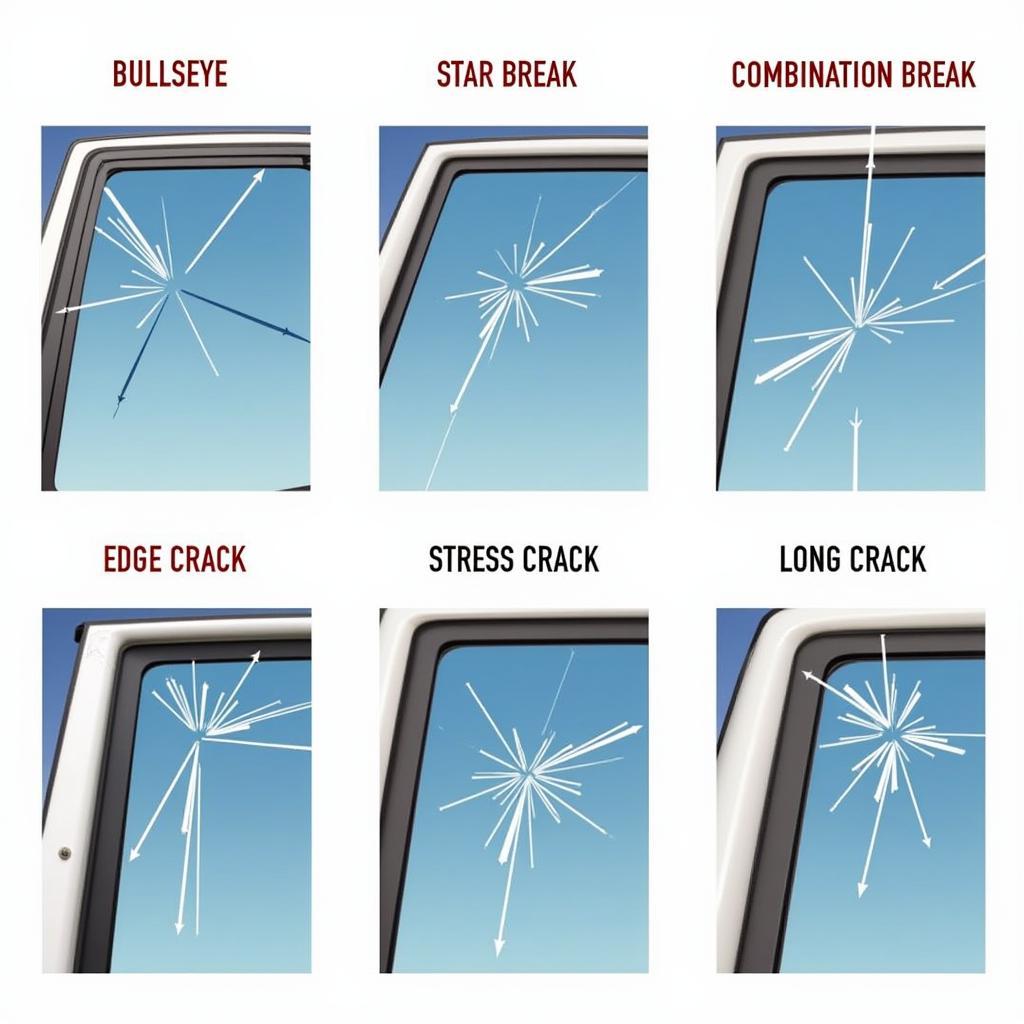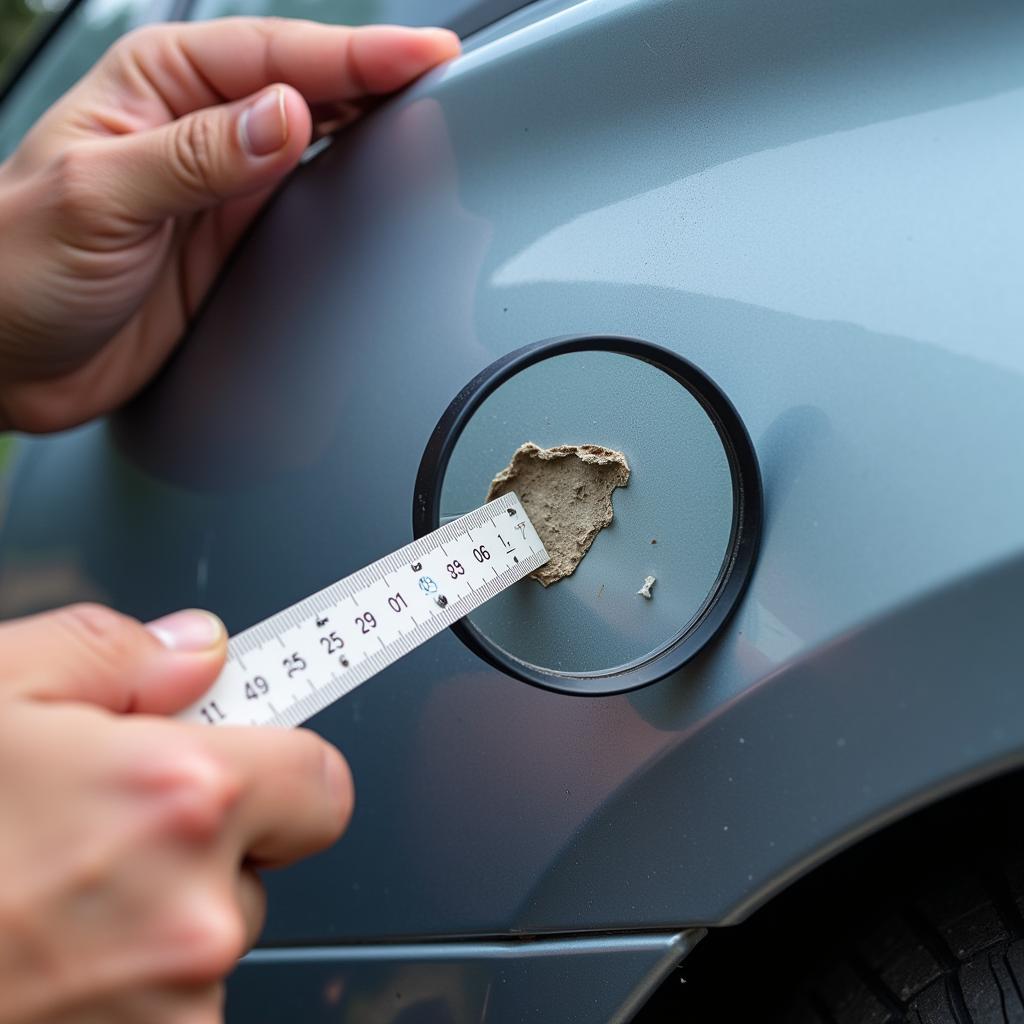Peeling paint on your car’s interior can make even a well-maintained vehicle look shabby. Luckily, fixing car interior paint peeling is often a DIY project, saving you a trip to the auto shop. This guide will provide step-by-step instructions and helpful tips for restoring your car’s interior to its former glory.
Understanding Why Car Interior Paint Peels
Before tackling How To Fix Car Interior Paint Peeling, it’s helpful to understand the causes. Several factors can contribute to this issue, including sun exposure, temperature fluctuations, general wear and tear, and even improper cleaning techniques. Knowing the root cause can help prevent future peeling.
Materials Needed to Fix Peeling Car Interior Paint
Gathering the right materials is crucial for a successful repair. You’ll need:
- Sandpaper (various grits)
- Primer specifically designed for plastic or vinyl
- Automotive interior paint (matching your car’s interior color)
- Clear coat sealant (optional but recommended)
- Masking tape and paper
- Cleaning solution (isopropyl alcohol is a good choice)
- Microfiber cloths
- Plastic putty knife (for scraping loose paint)
Step-by-Step Guide: How to Fix Car Interior Paint Peeling
-
Preparation: Clean the affected area thoroughly with a suitable cleaning solution and microfiber cloth. This removes dirt and grime, ensuring proper adhesion of the new paint.
-
Remove Loose Paint: Use a plastic putty knife to gently scrape away any loose or flaking paint. Be careful not to damage the underlying surface.
-
Sanding: Start with a coarser grit sandpaper (e.g., 220-grit) to smooth out the rough edges and create a uniform surface. Gradually move to finer grits (e.g., 400-grit) for a smooth finish.
-
Masking: Protect surrounding areas with masking tape and paper to prevent accidental overspray.
-
Priming: Apply a thin, even coat of primer to the prepared area. Allow it to dry completely according to the manufacturer’s instructions. Priming is essential for proper paint adhesion.
-
Painting: Apply several thin coats of automotive interior paint, allowing each coat to dry before applying the next. Thin coats prevent runs and ensure a smooth, professional finish.
-
Sealing (Optional): Apply a clear coat sealant to protect the paint and add a glossy finish. This step is particularly beneficial for high-traffic areas.
-
Reassembly: Once the paint and sealant are completely dry, carefully remove the masking tape and paper.
Preventing Future Peeling
Regular cleaning and conditioning of your car’s interior can help prevent future paint peeling. Avoid using harsh chemicals or abrasive cleaners. Parking in shaded areas and using sunshades can also help protect your car’s interior from the damaging effects of the sun. You can get some more tips by reviewing fixing peeling clear coat on car.
How to Choose the Right Paint for Your Car’s Interior
Matching the correct paint color is crucial. Most auto parts stores can help you find the right match based on your car’s make, model, and year. You might even get help fixing issues like the ones mentioned in [how to fix car door beading](https://autotippro.com/how to fix-car-door-beading/).
Expert Insights
John Smith, an automotive detailing specialist, advises, “Patience is key when fixing peeling paint. Taking the time to properly prepare the surface and apply thin coats will yield the best results.”
Conclusion
Fixing peeling paint on your car’s interior is a manageable DIY project that can significantly improve the appearance of your vehicle. By following the steps outlined in this guide and choosing the right materials, you can achieve professional-looking results. If you’re facing other car interior issues such as in can a peeling car door panel be fixed, then consider checking out our article on it. For personalized assistance, feel free to contact AutoTipPro at +1 (641) 206-8880 or visit our office at 500 N St Mary’s St, San Antonio, TX 78205, United States.
FAQs
- Can I use any type of primer? No, it’s crucial to use a primer specifically designed for plastic or vinyl surfaces to ensure proper adhesion.
- How long does it take for the paint to dry? Drying times vary depending on the type of paint and environmental conditions, so always refer to the manufacturer’s instructions.
- What if I can’t find a matching paint color? Consult an auto parts store or a professional auto detailer for assistance in matching your car’s interior paint color. Some tips can also be found by reading articles like how to fix chrome trim on my car.
- Can I fix peeling paint on leather seats? Leather requires specialized repair techniques, so it’s best to consult a professional for leather repair. Check out articles like car cealing fixer for additional tips.
- How can I prevent paint from peeling in the future? Regular cleaning, conditioning, and protecting your car’s interior from excessive sun exposure can help prevent future peeling.
- Is it necessary to use a clear coat sealant? While optional, a clear coat provides added protection and a more durable finish.
- What should I do if the peeling is extensive? For significant damage, it might be more cost-effective to consult a professional auto detailer or consider replacing the affected part.






Leave a Reply